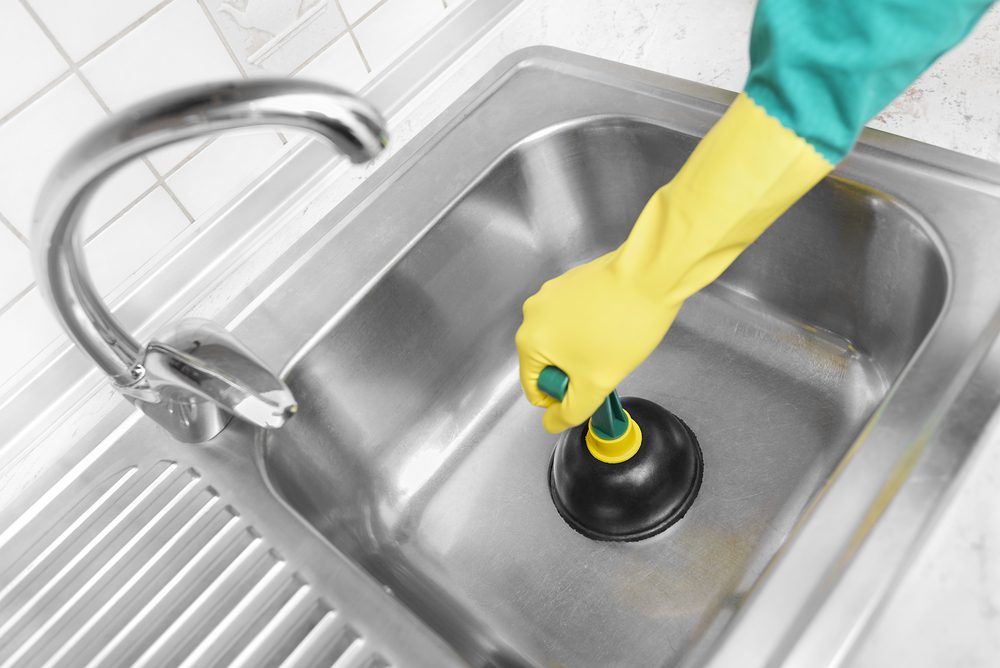What are your opinions about Solved! How to Fix a Slow Sink Drain?

Introduction
We've all existed: You're brushing your teeth or cleaning your hands, and you observe the water merging in the sink. Rather than quickly swirling down the tubes, it remains, turning your once-refreshing early morning regimen into a miniature overload scene. A slow-draining sink isn't just annoying; it's frequently an indicator of bigger plumbing problems prowling below the surface area. The bright side is that many slow-draining sinks can be taken care of with a little knowledge, a couple of basic tools, and some perseverance. All set to tackle this task head-on? Let's roll up our sleeves and dive right in.
Understanding the Sources Of a Slow-Draining Sink
Prior to you begin poking around in your pipelines, it assists to understand what may be triggering the slowdown. Recognizing the origin makes it much easier to choose the ideal solution.
Tools and Materials You'll Need
The right devices make all the distinction. Fortunately, you will not need a totally equipped plumber's van to finish the job.
Step-by-Step Guide to Dealing With a Slow-Draining Sink
Currently, allow's get involved in the nitty-gritty. This step-by-step procedure will guide you via basic techniques to restore your sink's water drainage.
Action 1: Eliminate and Tidy the Stopper
Frequently, the stopper (that tiny plug you push down to block water) is the very first culprit. Remove it thoroughly and clean off any kind of hair or crud trapped around its base. Wash it extensively prior to putting it back in place.
Step 2: Use a Bettor to Remove Particles
Got that plunger all set? Placement it over the drain and provide it a couple of firm pumps. The idea is to develop suction that can loosen up any blockage. If you see bits of debris drifting up, you're on the appropriate track.
Action 3: Attempt a Drainpipe Serpent or Cable Hanger
If the bettor doesn't suffice, it's time to bring out the drainpipe serpent. Gently feed it right into the drain and spin as you go. You may feel some resistance-- that's most likely the blockage. Keep turning and drawing up until you get rid of the blockage. If you do not have a drainpipe snake, an aligned cord hanger can operate in a pinch.
Tip 4: Use a DIY Drainpipe Cleanser
A natural cleaner made from cooking soft drink and vinegar can break down residual grime. Put half a cup of baking soft drink right into the drain, followed by half a cup of vinegar. Let it fizz for about 15 mins, after that flush with hot water. This chemical reaction typically does marvels for small clogs.
Tip 5: Rebuild and Evaluate the Sink
Placed everything back with each other and run the tap. Does the water currently swirl down the drain at a decent speed? If yes, give on your own a pat on the back. If not, do not misery-- there are still a few even more tricks up your sleeve.
Crucial Devices for Do It Yourself Fixes
A bettor is your best beginning point. A tiny, sink-sized bettor develops suction that can dislodge minor clogs. For more persistent obstructions, a drainpipe serpent (occasionally called a plumber's auger) works wonders. A pair of gloves, a flashlight, and maybe a pair of protective goggles are also convenient.
Recommended Cleansing Solutions
Mild dish soap and hot water can help break down oily build-up. A combination of cooking soft drink and vinegar is a reliable home remedy, and chemical cleaners offer an even more eco-friendly technique. Keep chemical drain cleansers as a last resort, as they can be rough on your pipelines.
Common Culprits Behind Slow Drainage
So, what's blocking points up? Commonly, it's a combination of everyday particles-- think hair, soap residue, tooth paste deposit, and leftover food bits. Over time, these tiny bits collect and hold on to the pipeline walls, progressively tightening the flow and making it harder for water to pass through. In some cases, natural resource from difficult water can likewise include in the substance, producing the perfect tornado for persistent obstructions.
When is it Time to Do Something About It?
If you discover the water draining slower than usual, it's an excellent concept to step in quicker rather than later. Waiting too long might bring about finish blockages, unpleasant odors, or perhaps pipeline damages. If the water takes greater than a few secs to clear out after switching off the faucet, consider it a red flag and get ready to put on your DIY hat.
Safety And Security First: Preventative Measures and Prep work
Prior to you launch into unclogging setting, think of security. You're dealing with potentially unclean water and debris, so slip on a set of handwear covers. If you're making use of chemical cleaners, make certain the room is well-ventilated and comply with the instructions on the tag.
Protective Equipment and Workspace Setup
Set some old towels or rags around the sink area to capture splashes. Eliminate any type of items that might get in your way, like soap dispensers or toothbrush holders. See to it you have excellent lighting-- get a flashlight if needed.
Different Approaches for Stubborn Clogs
Not all blockages are produced equal. If your sink still refuses to comply, take into consideration these alternate remedies.
Baking Soda and Vinegar Technique
We already discussed this, however it deserves keeping in mind again. This gentle, environmentally friendly technique is more secure than chemical cleansers and typically rather efficient.
Enzymatic Drainpipe Cleaners
Enzyme-based cleaners utilize natural microorganisms to digest raw material. They're an exceptional choice if you're aiming to avoid severe chemicals. Just keep in mind, they might take a bit longer to work their magic.
Chemical Drainpipe Cleansers: Advantages And Disadvantages
Chemical cleansers can blast with tough blockages fast, however they're not without disadvantages. They can generate warmth and fumes, damage pipelines if utilized exceedingly, and pose ecological dangers. Utilize them moderately, and constantly follow the instructions very carefully.
Preventive Measures to Keep Your Sink Flowing
Prevention is the best cure. By embracing a couple of simple habits, you can keep your sink from reducing in the first place.
Regular Cleaning Behaviors
Clean down the sink basin and component area consistently. Get rid of hair or food bits before they have an opportunity to wash down the drainpipe.
Avoiding Dangerous Substances Down the Drain
Hesitate before discarding coffee premises, grease, or fibrous vegetable scraps down the sink. These culprits hold on to pipe wall surfaces, developing clogs in time.
Regular Maintenance Checks
Schedule a fast regular monthly inspection. Run hot water through the sink for a couple of mins, focusing on the flow. If it appears sluggish, act quickly before it ends up being a full-blown blockage.
When to Call an Expert Plumber
Sometimes, regardless of exactly how difficult you try, that block just will not move. That's when it's time to bring in the pros.
Signs That Suggest an Extra Major Concern
If your sink drains pipes slowly despite numerous attempts, or if you notice water backing up in various other components (like your shower or bathroom), you may have a much more severe plumbing issue prowling deeper in the system.
Stabilizing DIY Initiatives with Expert Aid
While do it yourself can conserve you cash and supply a sense of achievement, there's no pity in calling an expert. A professional plumbing technician can analyze your entire plumbing configuration, guaranteeing there's no underlying damage or long-term trouble that might cost you much more in the future.
Comparing Prices and Long-Term Solutions
Before making a decision, consider the big picture. An inexpensive, quick fix might address the issue temporarily, yet purchasing a much more permanent remedy can save you cash and tension over time.
Evaluating the Expenditures of Do It Yourself vs. Professional Fixes
Do it yourself fixes usually cost bit more than the rate of a plunger or a bottle of baking soft drink. Specialist solutions, on the other hand, featured a price tag but may stop repetitive issues and expensive repair work later on.
Investing in High Quality Fixtures and Upgrades
If your sink's layout adds to constant clogs, it could be worth upgrading to higher-quality fixtures or changing the plumbing format. Consider this an investment in your house's capability and convenience.
Conclusion
A slow-draining sink can seem like a small inflammation, yet it's often an indication that your pipes needs a little tender loving care. By comprehending the root causes, employing the right tools and strategies, and committing to simple safety nets, you can keep your sink streaming openly. And when all else fails, never ever hesitate to call an expert-- your home's pipes is worth the financial investment in treatment and maintenance.
4 Tips to Fix a Slow Draining Sink
Removing the Pop-Up
This is a great place to start when it comes to troubleshooting a slow draining sink. If your sink has a pop-up, carefully take it out and remove debris that has built up around the tool. This will also allow you to see if there are any significant blockages in the drain that you can pull out on your own to help clear up the issue.
Use a Zip-It Tool
Like a snake for a large drain, a zip-it tool helps clear out any debris or hair from a sink drain. A tool like this can be used with a drain that pops out or not as it s thinner than most snake-like tools.
Use a Drain Cleaner
Whether making an at-home cleaner or buying a solution at the store, this is a common fix many turn to when it comes to a slow draining sink. There are several options available for purchase at local supermarkets, but for those who prefer to create their own solution, one of the most common is the following.
How to Unclog a Drain Naturally
Pour boiling water down the drain Pour cup of baking soda down the drain Pour cup of vinegar down the drain Wait 10 minutes Pour boiling water down the drain again Turn on the hot water faucet to clear out the solution Use a Plunger
As a worst-case scenario option, a plunger may be a good option for those who are still struggling to get debris out of their drain. This could be especially useful if there is a large item that you suspect may be significantly stuck down the drain.
https://www.abaileyplumbing.com/blog/2021/august/4-tips-to-fix-a-slow-draining-sink/

We had been shown that editorial on Three Common Ways to Fix a Slow Drain from an acquaintance on a different web page. Liked our piece? Please share it. Help others find it. I treasure your readership.
Or Book Technician Here
 Jeremy Miller Then & Now!
Jeremy Miller Then & Now! Batista Then & Now!
Batista Then & Now! Andrew McCarthy Then & Now!
Andrew McCarthy Then & Now! Megyn Kelly Then & Now!
Megyn Kelly Then & Now! Nicki Minaj Then & Now!
Nicki Minaj Then & Now!